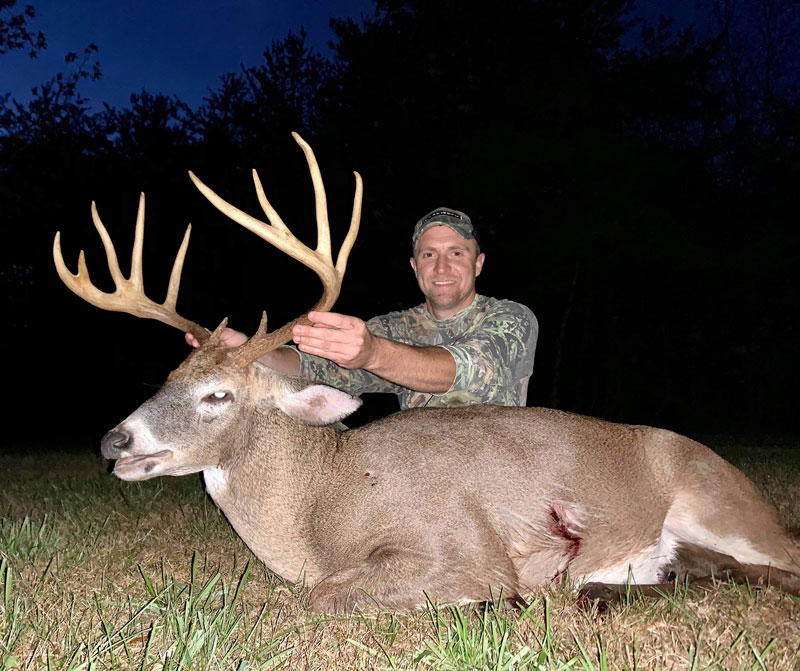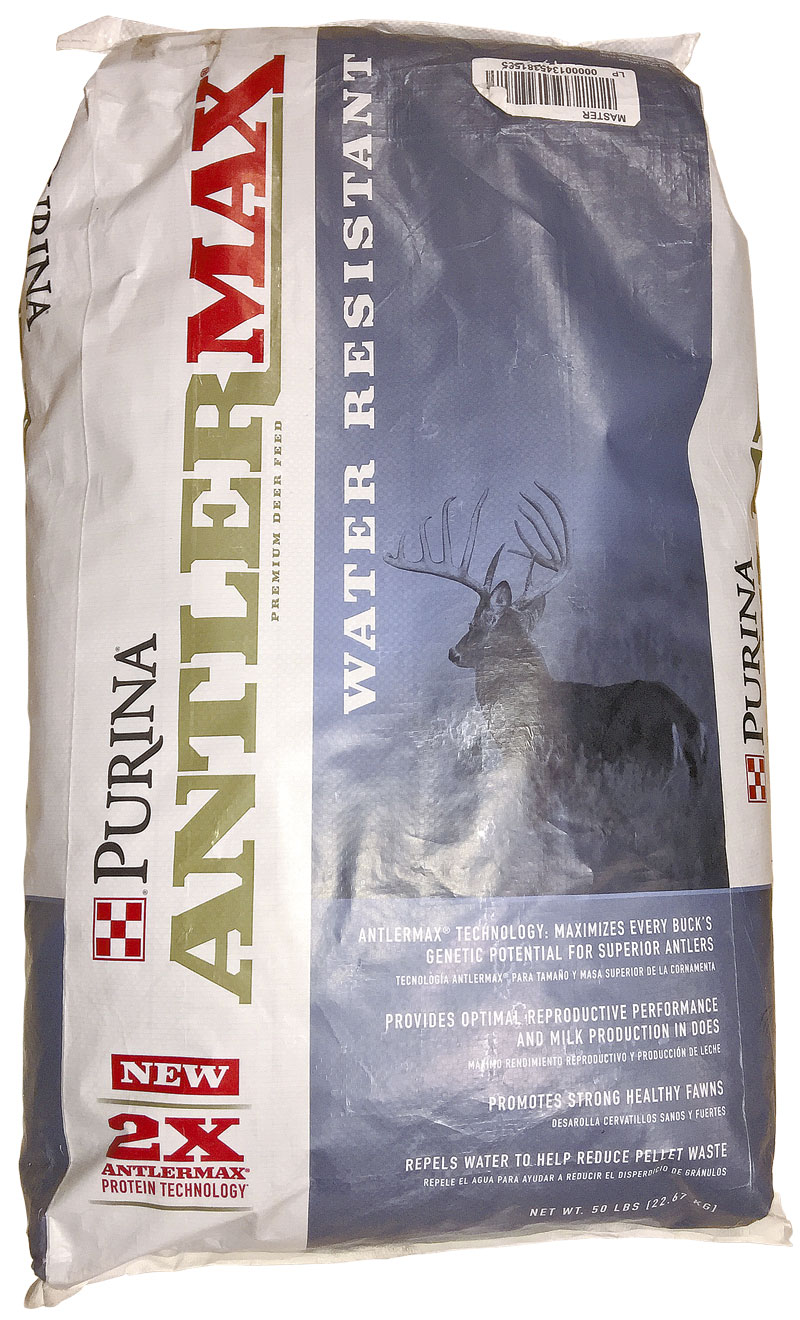
Nutrition is key to developing big bucks
Deer and other wild animals rely on their native terrain to obtain enough nutrients to survive. In most areas of the South, ample natural food resources are available in order to fuel populations of deer and other wildlife for most of the year.
Typically, during the spring and early summer, forests and open habitats are flush with greenery from herbs, forbs and other available foods. But depending on where these habitats are located, the available nutrient options may only provide limited nutrition during a critical time of year. Supplemental feeding through food plots or a high-protein feed can be beneficial on properties where landowners are trying to improve their herd and size of a buck’s headgear.
Spring and summer food sources are often overlooked and deemed not very important because of the green-up and the appearance of widely available options. This couldn’t be further from the truth. The quality and availability of spring and summer foods are extremely important for deer and other wildlife. It is a critical time of year for deer. And high-quality foods are required to produce desired outcomes.
It is always refreshing when native habitats provide necessary nutrients. But it doesn’t always work out that way, however. Deer can survive in most natural habitats. And if natural food is insufficient, deer will move to other places to find enough groceries to survive. For the landowner trying to improve his or her deer herd, high-quality food must be available throughout the year to keep the deer fed and as healthy as possible.
Habitat options
Landowners can improve their native food sources by improving access to the sun, nutrient supplementation and moisture management. At the same time, nutritious food plots can be maintained. Or new ones can be created to provide additional food opportunities for deer and other wildlife.
Beyond food plots and natural food options, landowners with an interest in growing large deer with bragging-sized racks should consider supplemental feeding with high-protein feeds. The late spring and summer is when the need is at its greatest for deer in the South.
Throughout May and into the summer, both bucks and does require highly nutritious food resources to fuel metabolic processes. Most does are dropping their fawns in May and June. And the high-quality foods are needed to fuel lactation. Bucks are in the middle of their antler growth cycle. All bucks can grow antlers. But only healthy deer can grow large antlers. And this is a very important point.
Nutrition’s role for bucks

Antler size and configuration is partially determined by both genetics and age. But nutrition is a major factor and should never be overlooked. With ample nutrition and age, large bucks can be grown even in areas with a perceived poor class of genetics. On properties with limited and poor-quality food resources, bucks will almost certainly have small, scrawny antlers, no matter how old or how great the genetics are. Nutrition is a crucial factor in antler development. And landowners with an interest in having large-racked bucks must encourage a high protein and high-quality diet for their herd.
Protein is the limiting factor in natural foods. It is also the key ingredient that produces healthy animals. Many natural foods in deer country are often low in protein or have lower-than-ideal protein content, even during the spring — or the high-protein foods are limited. In certain parts of the country — for example, south Texas, where large bucks are the norm — many wild foods at certain times of the year are naturally high in protein at 25% to 30%. Healthy animals eating high-protein food will wind up as bucks with large antlers.
Everything’s bigger in Texas
The Texas Parks and Wildlife Department (TPWD) funded, in 1989, a study performed by Donnie Harmel, John Williams and William Armstrong at Texas A&M University. The findings were pivotal about how landowners can make a direct impact on their deer’s antler mass. The study produced findings on the correlation between high-protein diets, body size and antler size in captive whitetail deer. The results were undeniable.
The study produced a solid correlation between protein content in diet and antler size. Body weight and antler size are directly proportional to the protein content and quality of their diet. Otherwise, antler quality increases with the increase in protein content and availability.
Only healthy deer can grow large antlers, and it starts with available nutrition with protein content as the major contributing factor to body size and antler mass. Landowners must provide their deer with all the high-quality food they can eat, and not from supplemental feeding with corn, either. Sure, deer will consume as much corn as is available. And it works like a magnet for attracting deer into an area. But it isn’t the best supplemental food source for producing a super healthy deer that will later produce a large rack.
In the TPWD study, the high-protein diets consisted of food with 16% percent or greater of digestible protein. Additionally, when deer were given the opportunity to eat as much as they wanted, antler growth also increased. Increasing the availability of high-protein food throughout the year will increase the size of deer racks on any property, regardless of location.
Many options are available
In today’s marketplace, landowners have access to feeder types and a wide range of protein options specifically developed for deer. High-protein supplements come in the form of blocks, pellets and granular delivery mechanisms. For the best results, high protein supplements in the form of pellets or as a granular-type feed are going to produce the best opportunity for deer to gain mass and to digest/process the most protein.
One such product produced by Purina is Antler Max Deer Feed 20. This product offers 20% protein ration with other supplemental resources developed to support overall health, reproductive performance, antler growth and will support weight gain as well.
As a note, ongoing protein supplementation isn’t exactly an inexpensive endeavor. And it requires a commitment. Supplements should be offered to deer in the spring and early summer to begin the program. But for the best results, protein supplements should be continually offered throughout the year and during every season. Body size is directly correlated to antler size according to the TPWD study. And a recurring commitment to provide high protein supplements can make a noticeable difference to the deer herd on any property.
Finally, there is a solution to produce large-racked bucks in the Carolinas. Supplemental foods high in protein is the key difference for producing large antlers. An increase in nutritional quality will improve both body mass and antler growth.


Be the first to comment